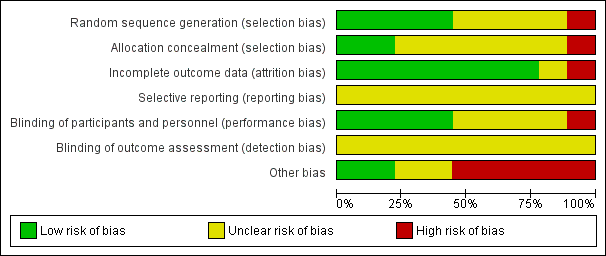Contenido relacionado
Revisiones y protocolos relacionados
Brian S Buckley, Marie Carmela M Lapitan | 6 octubre 2010
Awaiss Ellahi, Fiona Stewart, Emily A Kidd, Rhonda Griffiths, Ritin Fernandez, Muhammad Imran Omar | 29 junio 2021
Eu Chang Hwang, Shreyas Gandhi, Jae Hung Jung, Mari Imamura, Myung Ha Kim, Ran Pang, Philipp Dahm | 11 octubre 2018
Campbell Roxburgh, Jonathan Cook, Norman Dublin | 17 octubre 2007
Barbara S Niël‐Weise, Peterhans J van den Broek, Edina MK da Silva, Laercio A Silva | 15 agosto 2012
Priya Madhuvrata, June D Cody, Gaye Ellis, G Peter Herbison, E. Jean C Hay‐Smith | 18 enero 2012
Thomas BL Lam, Muhammad Imran Omar, Euan Fisher, Katie Gillies, Sara MacLennan | 23 septiembre 2014
Yang Wang, Liu Zhishun, Weina Peng, Jie Zhao, Baoyan Liu | 1 julio 2013
Ammar Alhasso, Cathryn MA Glazener, Robert Pickard, James MO N'Dow | 20 julio 2005
Jae Hung Jung, Jiye Kim, Roderick MacDonald, Balaji Reddy, Myung Ha Kim, Philipp Dahm | 22 noviembre 2017









